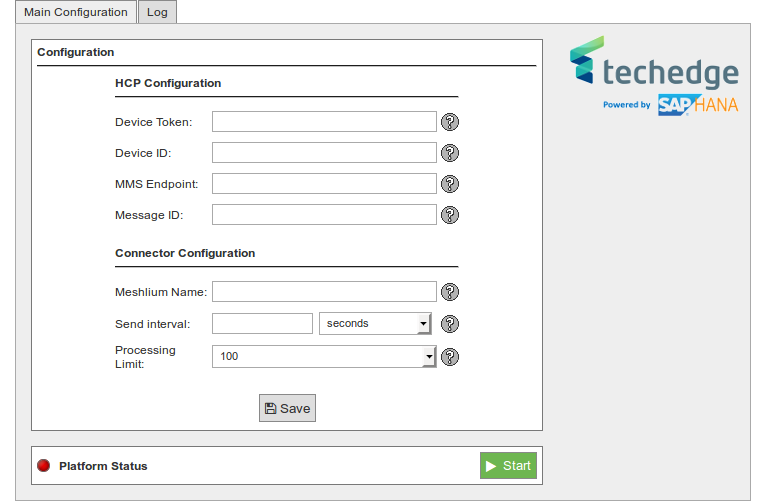TechEdge SAP HANA
SAP HANA Cloud Platform is a platform-as-a-service open (PaaS) that provides unique services for databases and applications in memory. It is the cloud platform that allows you to quickly develop new applications or extend existing ones. Allowing anyone to extend SAP applications within minutes, all in the cloud.
With SAP HANA Cloud Platform you can:
- Deploy in the cloud and their existing on-premise applications. You can quickly add a new functionality to their existing applications in the cloud and on-premise.
- Connect your cloud and on-premise applications to eliminate data silos and make a simple, secure and scalable digital access.
- Create and run new applications in the cloud to solve new problems, make new customers and new income.
- It allows to connect the business processes with field devices through Internet of things (IoT) services.
This platform allows:
- Enable remote services management of devices.
- Communicate through secure protocols with field devices.
- Manage devices and their messages remotely through programming interfaces (API).
Configuring SAP HANA
To make the connection between the platform and the SAP HCP Gateway Meshlium by Libelium, so we can receive the data sent from the gateway, a pre-configuration of Things Internet service is required.
For more information about how to configure the Things Internet service, please contact your TechEdge contact.
Configuration
Press on SAP HCP to access the service configuration screen of TechEdge cloud connector for SAP HANA Cloud Platform.
By accessing the SAP HCP connector configuration screen, a form with the necessary fields to configure is displayed.

- Device Token: The Token OAuth2.0 provided by HCP to the device create (you must configure SAP HCP IoT before, as described in the previous sections).
- Device ID: Identifier of the device created in HCP.
- MMS Endpoint: Data Endpoint of HCP MMS services.
- Message ID: ID of message type created in HCP.
- Meshlium Name: Meshlium unit identifying name (free field).
- Send Interval: Defines the connector's space of time to wait between each HCP cloud deliveries. Each delivery contains between 100 and 200 sensors traces, and in order to not saturating the Gateway memory, the minimum accepted is 5 seconds.
- Processing Limit: Limit of simultaneous messages processing in each of HCP cloud deliveries, the figures are considered between 100 and 200, these are the figures recommended by Libelium to ensure a high performance in the Gateway.
After setting all fields described above, it is necessary to save the changes by clicking the "Save" button at the bottom of the configuration form.
Controlling synchronization
After saving the configuration, you can now start the service. To do this click on the "Start" button.

When the service has started, "Platform Status" is displayed in green, and the "Start" button changes to "Stop".
Note: The Data synchronization with Meshlium will be held as maximum packet size defined in “Processing Limit” field. All those new data received since the last delivery will be synchronized, if the data exceeds the maximum size set to “Processing Limit” several deliveries will be made to complete the synchronization.
With the service has started, to stop the service you must click on the "Stop" button on the HCP configuration screen in Meshlium.

Pressing the "Stop" button, a stop will start in a controlled manner, allowing you to stop the service without incident (close files, ends active processes of polling, etc.), ensuring a proper functioning of the Meshlium gateway.
When the service has stopped, "Platform Status" is displayed in red, and the "Stop" button will change by "Start".